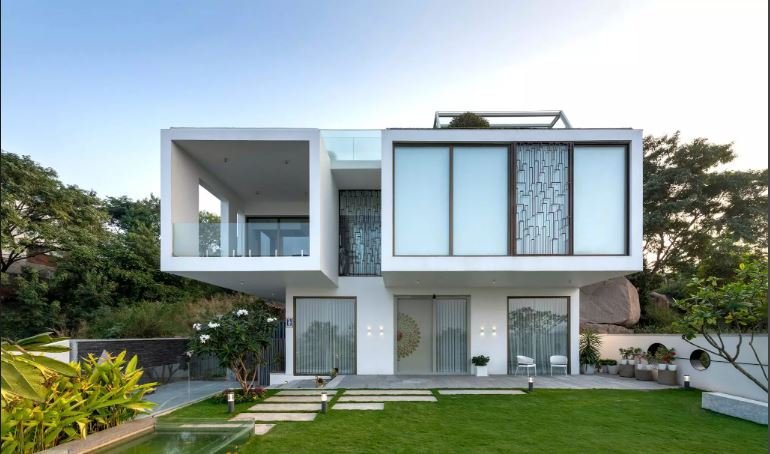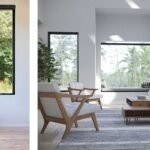Eco-Friendly Design Elements for Modern Buildings
Eco-friendly design elements have become essential in modern architecture, reflecting a commitment to sustainability and environmental stewardship. These design elements not only reduce the environmental footprint of buildings but also enhance the quality of life for their occupants. Incorporating eco-friendly practices into modern buildings helps create sustainable, energy-efficient, and healthy living and working environments.
Green Roofs and Walls
Green roofs and walls are innovative eco-friendly design elements that offer numerous benefits. They provide natural insulation, reducing the need for heating and cooling, and help manage stormwater runoff. Additionally, they improve air quality and create habitats for urban wildlife. Green roofs and walls contribute to the aesthetic appeal of buildings while promoting biodiversity and sustainability.

Energy-Efficient Windows and Insulation
Energy-efficient windows and insulation are crucial for reducing a building’s energy consumption. Double or triple-glazed windows with low-emissivity coatings minimize heat transfer, keeping interiors warm in winter and cool in summer. High-quality insulation in walls, roofs, and floors prevents energy loss, ensuring a comfortable indoor environment. These elements significantly lower heating and cooling costs and reduce greenhouse gas emissions.
Solar Panels and Renewable Energy Systems
Solar panels and renewable energy systems are vital components of eco-friendly building design. Installing solar panels on rooftops or facades allows buildings to harness renewable energy, reducing reliance on fossil fuels. Integrating wind turbines, geothermal systems, or solar water heaters further enhances energy efficiency. These systems not only decrease energy bills but also contribute to a building’s overall sustainability.
Water Conservation and Management
Water conservation and management are essential for eco-friendly buildings. Implementing low-flow fixtures, dual-flush toilets, and water-efficient landscaping reduces water consumption. Rainwater harvesting systems and greywater recycling further minimize water waste. These practices ensure sustainable water use and help mitigate the impact on local water resources.
Sustainable Building Materials
Using sustainable building materials is a key aspect of eco-friendly design. Recycled, reclaimed, and locally sourced materials reduce the environmental impact of construction. Bamboo, recycled steel, and reclaimed wood are examples of sustainable materials that offer durability and aesthetic appeal. Choosing non-toxic, low-emission materials also improves indoor air quality and promotes occupant health.
Smart Building Technologies
Smart building technologies enhance the efficiency and sustainability of modern buildings. Automated systems for lighting, heating, and cooling optimize energy use based on occupancy and weather conditions. Smart meters and energy management systems provide real-time data, enabling occupants to monitor and reduce their energy consumption. Integrating these technologies into building design fosters energy conservation and operational efficiency.
Passive Design Strategies
Passive design strategies focus on maximizing natural light, ventilation, and thermal comfort without relying on mechanical systems. Orienting buildings to capture natural light and heat, using shading devices, and incorporating natural ventilation reduce energy demand. Passive solar design and thermal mass materials store and release heat, maintaining a comfortable indoor temperature. These strategies minimize energy use and create more sustainable buildings.
Indoor Environmental Quality
Ensuring high indoor environmental quality is crucial for occupant health and well-being. Eco-friendly buildings prioritize natural light, fresh air, and non-toxic materials. Installing operable windows, ventilation systems, and air purifiers enhances indoor air quality. Biophilic design elements, such as indoor plants and natural materials, create a connection to nature, improving mental health and productivity.
Waste Reduction and Recycling
Incorporating waste reduction and recycling practices into building design promotes sustainability. Construction waste can be minimized through careful planning and the use of prefabricated components. Providing recycling facilities and composting systems encourages occupants to reduce waste. Implementing these practices supports a circular economy and reduces the environmental impact of buildings.
Conclusion
Eco-friendly design elements are integral to creating sustainable and energy-efficient modern buildings. By incorporating green roofs, energy-efficient windows, renewable energy systems, water conservation measures, sustainable materials, smart technologies, passive design strategies, and waste reduction practices, architects can significantly reduce the environmental footprint of buildings. These design elements not only promote sustainability but also enhance the health, comfort, and well-being of occupants, contributing to a more sustainable future.



